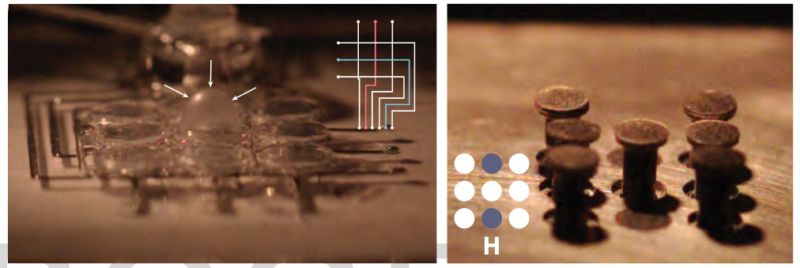
Enlarge / The device can provide haptic information by expanding bubbles (left) or pushing up pins (right). (credit: Heisser, et. al.)
There have been a lot of advances in accessibility recently, with voice control, screen readers, and more improving access to computers for many people. But something that’s been missing is a haptic device, which provides touch-based information—think of a dynamic Braille display. For many people, notably those with limited vision and hearing, this would be the most effective way of interacting with electronics. And a simple, low-cost haptic device can have plenty of applications beyond accessibility.
One of the reasons these haven’t become widely available is that they’re hard to make. Physical actuators that can create a pattern detectable by touch take up a fair bit of volume and are difficult to pack into close proximity to each other. They also tend to be pricy. So, a US-Israeli team of researchers looked into alternatives to physical hardware. And the researchers came up with an unexpected alternative: set off a miniature fireball inside a flexible bit of polymer that can inflate like a balloon.
Replacing hardware with combustion
In theory, making a refreshable Braille display is relatively easy. All we need is an array of mechanical devices that can be switched between up and down states. The reason these don’t exist is that the mechanical devices that are commercially available are too bulky to place in close proximity. For example, the researchers consider the possibility of using microfluidics to inflate a polymer bubble. But the valves needed for a 2 x 3 grid of devices would occupy 18 times the area of the device itself and cost about $250.00.
